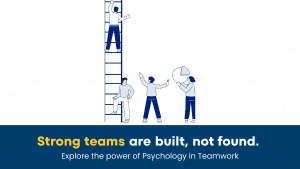Skills Gap Analysis In Corporates
...
A skills gap analysis is a process that human resources or other management professionals use to identify skill gaps among employees or teams. A skill gap arises when a task or responsibility requires more advanced skills than the employee or team currently has. HR or management can thus address the skills gap in the organization once they get to know this information. It can then be worked on through upskilling, reskilling, L&D investment decisions, succession planning and training, etc
According to the World Economic Forum’s 2018 Future of Jobs Report, 54% of all workers will need to upgrade or replace their skills by 2022. The reason stated for this is rapid developments in technology and digitalization to a great extent. Skill Gap Analysis has become increasingly relevant as companies experience a growing need to reskill and upskill their people.
According to the World Economic Forum’s 2018 Future of Jobs Report, 54% of all workers will need to upgrade or replace their skills by 2022. The reason stated for this is rapid developments in technology and digitalization to a great extent. Skill Gap Analysis has become increasingly relevant as companies experience a growing need to reskill and upskill their people.
For HRs, it’s important to know what skills and knowledge are currently missing in the organization’s workforce and which of those skills are essential for their organization’s performance. That is why it is crucial to conduct a skill gap analysis. Skills Gap Analysis can be done both in qualitative as well as quantitative formats. It can be done for individuals as well as teams.
Below are a few of the reasons why conducting a skills gap analysis is useful:
Below are a few of the reasons why conducting a skills gap analysis is useful:
Provides insights about your workforce -
A manager will be able to identify employees who have up-to-date knowledge of particular skills and aspects of the business, along with employees with skill gaps.
Training resources then can be focused on those skills that require the most attention. This will result in optimal use of resources in terms of improving the overall performance of the team.
Boosts individual L&D
It allows employees to discover what improvements they need to make to acquire or improve the skills and competencies necessary to succeed in their current and future roles.
It will eventually increase the productivity of your employees as well.
It will eventually increase the productivity of your employees as well.
Helps with strategic work planning
Strategic workforce planning entails ensuring you’ve got the right number of people with the right skills in the right place.
It’s crucial to know exactly where your employees stand from a skills perspective.
Better Recruitment
It’s a lot easier to recruit good people if you can identify candidates whose skills match those that need to function effectively in a particular role.
Skill gap analysis helps the organization with this.
Author
Aishwarya Dhopaokar
Aishwarya is an aspiring Sports and Exercise Psychologist. Her interests include travelling, sports and reading. She loves dogs too!
Related Post
Psychology of Teamwork – The Make Or Break Factor
admin
May 14, 2025


